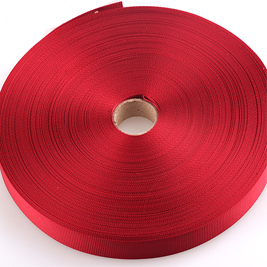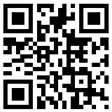The longitude and latitude are interwoven. [Subject] After twisting, the yarn is warped into a bobbin (pan head), and the weft yarn is shaken into a bobbin, which is woven on the loom. In the 1930s, it was used for hand pulled wood looms and iron wood looms. In the early 1960s, the 1511 loom was converted into a belt loom, which is still widely used. Due to the small width of the belt, the weaving methods are different, ranging from single, double, dozens of pieces, from single layer to double layer. In 1967, the research group of shuttleless weaving belt with workers as the main body in the industry successfully designed and manufactured a high-speed single shuttleless loom by itself, which realized that the weaving belt does not need shuttles, and the process is shortened, the floor area is small, and the labor productivity is improved, which is an innovation in the history of Chinese weaving belt technology.

The basic process flow of knitting is: bleaching and dyeing - weft rolling - weaving - off machine cutting - packaging. Since 1960, many technical innovations have been carried out on the knitting machine, mainly including the enlargement of peach plate diameter, the installation of an automatic stop device for breaking rubber bands, and the replacement of iron ingots with nylon ingots. The improvement of these equipment has increased the vehicle speed to 160~190 rpm, doubled the stand rate and greatly improved the product quality. In 1980, SD-81A and B rubber ingot belts were developed, which are soft, light, thin, firm, with small elongation, small impact force, short and flat joints. At the beginning of 1990, the trial production of car seat belts for Santana cars was successful. After more than two years of research and trial production, the product quality reached QC49-92 and TL-VW470 standards.

The printing is in the passenger compartment to enhance the matching and coordination with the color in the cabin. The binding ribbon printing will be dyed into various colors. People always hope that the color dyed will not fade within the specified time. Therefore, the belt has a specific color fastness test. The wrapped webbing belt is exposed to light, and like other substances, it will fade. The wrapped webbing has this characteristic, which is called light color fastness. In this test, the webbing is placed under representative strong light and exposed to the specified time. Then compare the bag webbing with the standard color card to evaluate a fading grade.

However, due to its hardness, it is not suitable for large area of field patterns. Large area patterns should be printed with water slurry and then dotted with glue slurry, which can not only solve the problem of hard glue in large area, but also highlight the sense of hierarchy of patterns; Another method is to steal a large area of field patterns and make them look bad, but they are always hard to wear. Therefore, it is better to combine water and glue to solve the problem of large area printing. It has smooth surface and matte surface. It has soft, thin, environmental protection and other characteristics, and can be stretched. Generally speaking, glue printing is more commonly used. For leisure brands such as "Yichun", they basically use glue ¡¡¡¡¡¡¡¡¡¡¡¡¡¡¡¡¡¡¡¡¡¡¡¡¡¡¡¡¡¡¡¡¡¡¡¡¡¡¡¡¡¡¡¡¡¡¡¡¡¡¡¡¡¡¡¡¡¡¡¡¡¡¡¡¡¡¡¡¡¡¡¡¡¡¡¡¡¡¡¡¡¡¡¡¡¡¡¡.

Here are some examples of the production process of radio lanyard, toy lanyard, flashlight lanyard and camera lanyard. 1. Wholesale of webbing: nylon, pp, polyester and high elastic cotton are generally used to make lanyards, and the general specifications are 4mm, 5mm, 6mm, 7mm, 8mm, 10mm, 12mm, 16mm, 20mm and 25mm wide. 2. Accessories: general accessories include metal clasps, certificate clips, etc., and plastic ones include aircraft clasps, plug buckles, safety buckles, etc. 3. Assembly: first print, cut according to the specified size, add string, plastic buckle, glue or press metal sheet, and then package. After inspection, a lanyard can be shipped in this way.

Direct dyes, suitable for cellulosic fabrics, have poor washing fastness and different light fastness, but the modified direct dyes will improve their washing color. special Single and double layer belt manufactor Disperse dyes are suitable for viscose, acrylic, nylon, polyester, etc. The fastness to washing is different, polyester is better, and viscose is worse. Azo fuel (Naftol dye) is suitable for cellulosic fabrics. It has beautiful color and is more suitable for beautiful color and luster. Sulphur dye, suitable for Suifenhe River special Single and double layer belt The color is dim, mainly dark blue, black and brown. The light and water resistance are good, and the chlorine bleaching resistance is poor. Long term storage of the fabric will damage the fiber.






